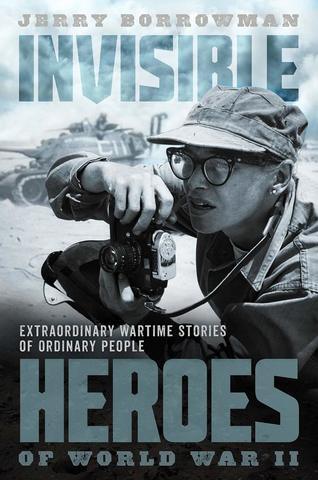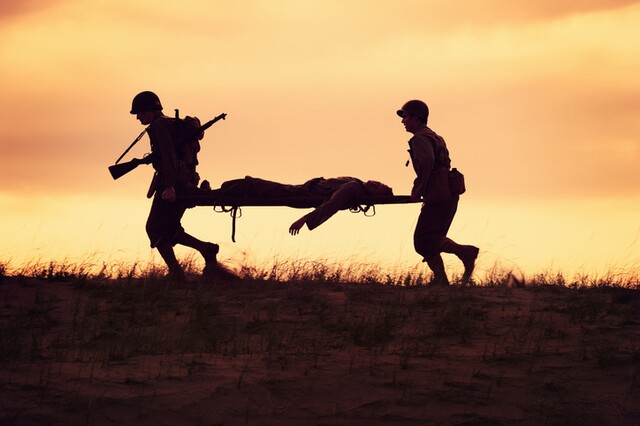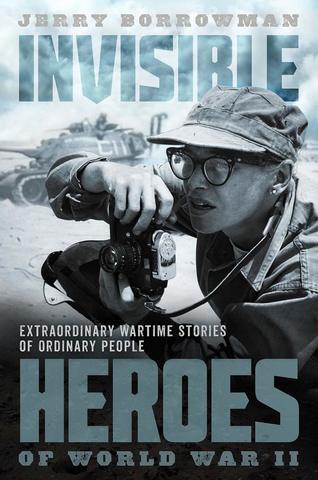While training at the Army Operational Emergency Medical School, U.S. Army Special Forces Combat Medic Staff Sergeant Leo Jenkins noted:
"We had successfully simulated the loss of about half of the blood in my body. The doctor asked a series of questions including my name, rank, and social security number. I answered them without hesitation. He had me complete a couple of squats, again, no issues whatsoever. The good Doctor then delivered the moral of the story. An incredibly fit Ranger or Seal in his early 20s is going to compensate right up until the point where he dies. You can have a guy that has been shot, lost half of the blood in his body, and he will still be ready to fight. As a special operations medic this is something that must always be kept in mind. The body’s resilience in the face of adversity is absolutely astounding. The amount of abuse that it is able to take and continue functioning is nothing short of miraculous."[1]
Two years later, this training helped Jenkins as a special forces combat medic in Afghanistan as he treated men suffering not only from wounds but intense heat, dehydration, lack of sleep, and overexertion that threatened their lives on a regular basis.
“As we leave the village, we are notified that we are being extracted. We need to move roughly 9 kilometers to our exfil point. . . . At this point almost everyone was severely dehydrated and without any water. It was over 100 degrees and this was some of the nastiest country in the world. We would be extracted just past dark so it only gave us a few hours to get to our grid coordinate. Most of the platoon had done well to hide their discomfort up until this point. Those 9 kilometers were the breaking point though. . . . Most of us had less than 4 hours of sleep in the past 72 hours; add in the lack of acclimatization to the high altitude and the lack of water and we were getting close to becoming combat ineffective. "I started an IV on the RTO (Radio Telephone Operator). His eyes were rolling to the back of his head and he was tachycardic. His skin was hot and dry. He had literally sweated out everything in his system. . . . "I started to get concerned for the rest of the men knowing that our RTO is a pretty tough guy. I remembered back to the lessons learned at OEMS (Operational Emergency Medical School) about Rangers being able to compensate right up to the point of death. . . . "I quickly make my way up to the front of the file formation asking how each guy is along the way. Once I get to the front I stop and face the men as they walk past me. . . . The thing about Rangers, and most members of special operations, is they won't always tell you that they are hurt. They pride themselves on their ability to endure incredible amounts of suffering."[2]
In these two vignettes, Jenkins provides a brief glimpse into the life of a special forces combat medic. Not only is he an active member of the combat team, expected to take part in all combat operations, but he carries the additional burden of providing medical assistance of all types to the members of his group. Often that requires personal sacrifice.
Combat Medics
Sometimes the medical service is mundane, particularly in camp with no active fighting. It includes waking up at 4:45 a.m. to open the Aid Station for soldiers to seek initial help. This can include colds, sore throats, ingrown toenails, cuts and abrasions from training accidents, and other non-life-threatening ailments. If the medical condition is more serious, the medic walks the soldier to the Battalion Aid Station where a surgeon and physician’s assistants have access to a fully stocked pharmacy and examination rooms. Higher rated medics will stay and help with surgeries and post-op recovery.
In combat, the medics’ role is far more serious since he is often the only medically trained person in the area. Such was Sergeant Jenkins’ role in helping the members of his team survive from the heat of the Afghanistan summer. In this particular story, the man whose life he saved by giving him the IV solution was the same who had earlier cast the IV pack aside when asked to carry it because he thought it weighed too much. Without complaint Jenkins had recovered it and carried it in his pack, thus saving the RTO’s life.
Here’s how Army Special Forces Staff Sergeant Brent Borrowman, an active member of The Church of Jesus Christ of Latter-Day Saints describes the role:
“My job is different than the normal line medics. I’m expected to be an infantryman first and foremost, so when we go out on patrols I’m not performing as a medic unless something happens where I need to take care of someone else. I’m either on the 50-caliber machine gun on the armored vehicle, or I act as the truck commander for that particular mission. Once something does occur and when the situation allows for it, I switch to doing medical care. I may be the first to respond, or the final one depending on the seriousness of the injuries. Our clinics are set up to where we’re supposed to be able to take care of a critically wounded patient for up to 72 hours. Our field clinics are outfitted with ventilation and ultrasound systems, as well as a lot of other capabilities of the average medical facility, so we can offer a high level of care on a temporary basis."[3]
On one occasion, Sergeant Borrowman provided emergency first aid to an American soldier who was shot in Iraq. He stayed with the wounded man while transporting him to a field hospital. Unfortunately, the wounds were too serious and his patient died. On another occasion, he provided care to a soldier who was working on a damaged “RPG” (Rocket Propelled Grenade that is fired from the shoulder to disable an enemy tank) when the RPG exploded. Borrowman and the field medical team provided care for fifteen hours before sending the injured soldier to a hospital downtown for surgery.
The main thing about a medic is that no matter how tired or stressed, he places the interests of the members of his team first, constantly watching and questioning about their welfare.
Immediate attention to battlefield wounds can make the difference between life and death.
Fortunately, modern military treatment protocols since World War II are so effective that in 1966, “Expert consultants returning from both Korea and Vietnam have publicly asserted that, if seriously wounded, their chances of survival would be better in the zone of combat than on the average city street."[4] That medical success rate is even more effective today in Afghanistan, Iraq, and other military theaters.
The Army requires its special services medics to master a foreign language and become "trained swimmers, paratroopers, and survival experts, as well as trained in many forms of combat" on top of their regular and rigorous duties.[5]
Sergeant Borrowman is proficient in French. And, like many others, he went beyond the minimum required medical training to certify as a Licensed Practical Nurse so he can provide the highest possible care to those with whom he serves.
From WWII to Today
Up through World War II, combat medics carried no weapons. Their sole task was to render medical aid. In recognition of their non-combat status, Chapter 4, Article 24 of the 1864 Geneva Convention includes a provision that:
“Medical personnel exclusively engaged in the search for, or the collection, transport or treatment of the wounded or sick, or in the prevention of disease, staff exclusively engaged in the administration of medical units and establishments, as well as chaplains attached to the armed forces, shall be respected and protected in all circumstances.”
In other words, it was a war crime to kill or injure a field medic or other member of the medical team wearing the proper medical insignia. Most U.S. medics also wore a Red Cross armband to more easily distinguish their non-combat role.
Of course, not all enemy combatants observed the Geneva Convention. While Japan signed the Third Geneva Convention in 1929, their legislature never ratified it. As documented in the true story of Army Medic Private Desmond Doss, recipient of the Medal of Honor who heroically saved the lives of 75 injured men on Hacksaw Ridge on Okinawa island, many Japanese targeted the unarmed medics to prevent medical treatment to other injured soldiers.
As a faithful Seventh Day Adventist who once came close to using a gun against his own abusive father, Doss made a personal decision to never again carry a weapon. Working at the Newport News shipyard when the war broke out, he was eligible for deferment. But, he felt the need to serve in battle, viewing himself as a “conscientious cooperator” instead of a conscientious objector. He suffered for his unwillingness to carry a weapon until his courage and compassion under fire gained the respect of his comrades.[6]
Doss’s remarkable story illustrates the fact that medics do far more than administer first aid—they also risk their lives to bring injured men to safety, whether that requires them to drag the person or carry them on their shoulders. They deal in blood and mangled tissue as they struggle to save lives and relieve pain. Perhaps that’s why they are affectionately called “Doc” in all branches of the service, even though they are not actual medical doctors.
Since World War II the policy of not carrying a weapon has changed. Medics may choose to carry a small handgun to protect themselves and their patient, if they desire. If wearing the proper insignia, they are still considered a non-combatant and protected by the convention.
But, in current combat areas, most medics choose not to wear the insignia because the Geneva Convention is either not recognized or is ignored by terrorists and insurgents. In fact, some enemy agents actively target military medical staff and facilities to destroy a unit’s ability to care for its sick and wounded. As noted by both Sergeant Jenkins and Sergeant Borrowman, medics in the Special Forces, including the Army, Navy, Marines and Air force are active duty soldiers with backup training in field medicine.
Goodwill Ambassadors and Unsung Heroes
In Iraq and Afghanistan, the American medical teams often provide medical care to local civilians. These acts of service reflect positively on America’s image in this beleaguered area of the world. Sergeant Borrowman spoke of his interactions with Iraqi civilians during one of his deployments in 2005:
“It was after the main push so a lot of the smaller villages were rebuilding and the people were all pleasant to me. They were grateful for what we were doing. The ones I had the most interaction with was in the hospitals, so most of the people I saw were locals who were injured in some way. They were just really grateful. My experience with the Muslim people is that most of them are very caring and giving. They have the attitude among themselves that 'I will take care of you because one day I will need to be taken care of.' By allowing us to help them, they felt an obligation to help us later if there was need."
In a world where major cultures mistrust one another, the medical teams in foreign lands are often America’s most effective ambassadors of goodwill.
There are surprisingly few books and memoirs written by or about medics (called Corpsmen in the Navy) given the huge impact they have in the lives of soldiers, sailors, and airmen. They do make brief cameo appearances in war movies when the main character is injured. Hacksaw Ridge, which depicts the story of Desmond Doss, (directed by Mel Gibson), is one of the first to place a medic in the starring role. The movie and television series M.A.S.H featured medics only indirectly on the few occasions when they came to the mobile field hospital with an injured soldier. But M.A.S.H. was effective in portraying the dedication and hazards of military medical units near the frontlines.
Still, the medics, and other members of the military medical teams, deployed throughout the world remain largely invisible to all but those who directly benefit from their service. Yet we are all indebted to them for empowering the military to function effectively in protecting our freedom.
Lead image from Getty images
Get more fascinating stories and insights from Jerry Borrowman in Invisible Heroes of World War II: Extraordinary Wartime Stories of Ordinary People.
Invisible Heroes of World War II, documents ten fascinating true stories of a diverse group of soldiers and noncombatants from all over the world, including African Americans, women, and Native Americans who worked and fought to keep the world safe from tyranny and oppression. Some were frontline soldiers and spies, while others were engineers, industry workers, or war correspondents and photographers. Without much fanfare, these heroes made noteworthy contributions to the war effort. Some even gave their lives for freedom and liberty. All served with valor and distinction, and their names should never be forgotten.
Jerry Borrowman is an award-winning author of 18 books of historical biography, fiction, and creative non-fiction. To learn more please visit jerryborrowman.com.
[1] Jenkins, Leo. Lest We Forget (p. 58). Unknown. Kindle Edition.
[2] Jenkins, Leo. Lest We Forget (pp. 97-100). 2013. Kindle Edition
[3] U.S. Army Special Forces Staff Sergeant Brent Borrowman, live interview with the author, December, 2015.
[4] Committee on Trauma and Committee on Shock, Division of Medical Sciences, National Academy of Sciences, National Research Council, National Academies Press, Sep 1, 1966 - Medical, page 12 (of 37 pages)
[5] Careers and Jobs, U.S. Army. Special Forces Medical Sergeant (18D). https://www.goarmy.com/careers-andjobs/brose-career-and-job-categories/combat/special-forces-medical-sergeant.html
[6] Miller, Mike. The True Story of Hacksaw Ridge and Desmond Doss: the Medal of Honor Winner Who Never Fired a Shot. Peoplemovies, February 24, 2017. People Magazine, copyright Time, Inc., 2017. Extracted July 25, 2017 http://people.com/movies/the-true-story-of-hacksaw-ridge-and-desmond-doss-the-medal-of-honor-winner-whonever-fired-a-shot/



